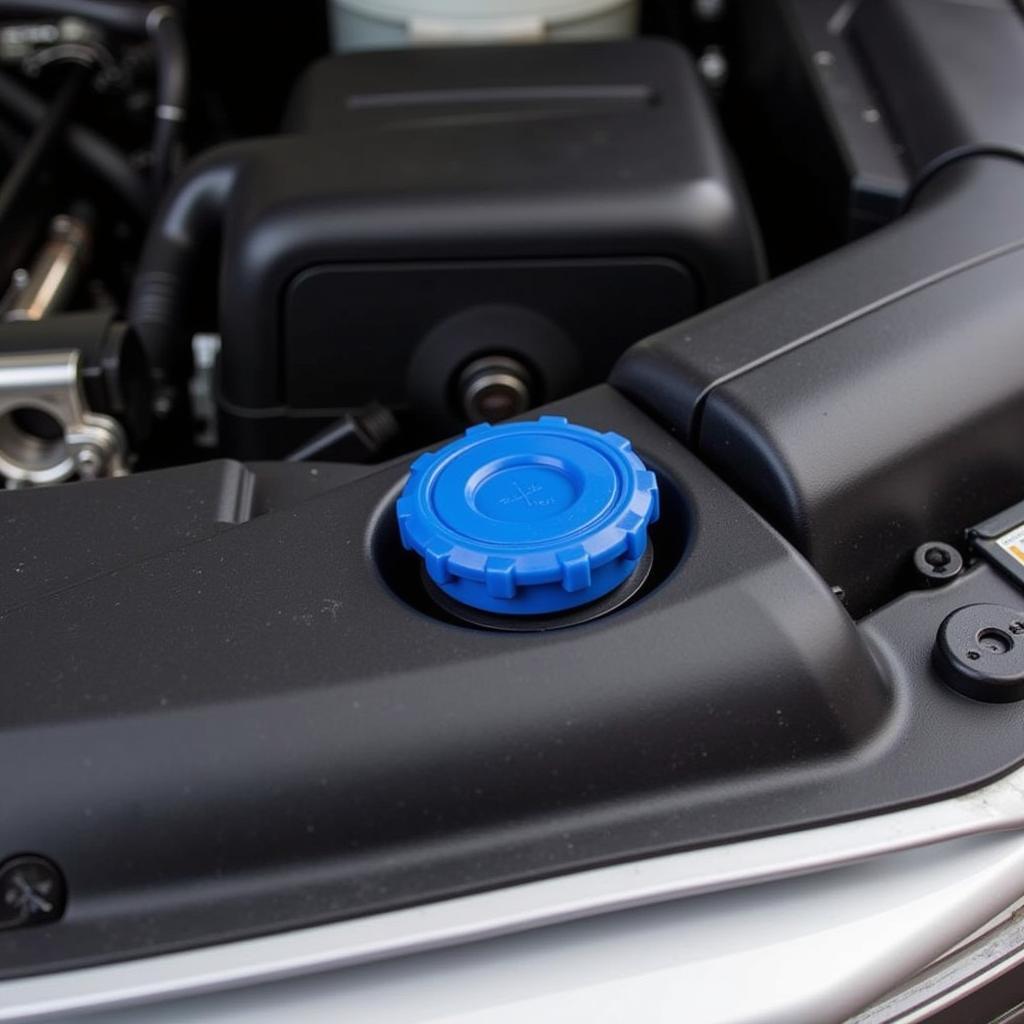The Volvo XC40 AdBlue warning light can be a source of anxiety for drivers. This guide provides a comprehensive overview of the AdBlue system in your Volvo XC40, explaining why the warning light illuminates and offering practical solutions for resolving the issue, potentially saving you a costly trip to the mechanic.
Understanding Your Volvo XC40’s AdBlue System
AdBlue, also known as Diesel Exhaust Fluid (DEF), is a crucial component in your Volvo XC40’s emissions control system. It’s injected into the exhaust stream to convert harmful nitrogen oxides (NOx) into harmless nitrogen and water vapor, helping your vehicle comply with stringent environmental regulations. The AdBlue warning light serves as an indicator of potential issues within this system.
Why is My Volvo XC40 AdBlue Warning Light On?
There are several reasons why your AdBlue warning light might be illuminated. These include low AdBlue fluid levels, a faulty AdBlue sensor, or problems with the AdBlue injection system itself. Ignoring this warning can eventually lead to reduced engine performance and even prevent your vehicle from starting.
- Low AdBlue Fluid: The most common reason is simply that your AdBlue tank needs refilling. Your XC40 will typically provide a series of warnings as the AdBlue level decreases, giving you ample time to top it up.
- Faulty Sensor: A malfunctioning AdBlue level sensor can incorrectly report low fluid levels, even when the tank is full. This requires diagnostic testing to confirm.
- Injection System Issues: Problems with the AdBlue injector, pump, or other components of the injection system can also trigger the warning light.
- System Malfunction: In some cases, a software glitch or other system malfunction can cause the AdBlue warning light to illuminate.
 Volvo XC40 AdBlue Tank Location
Volvo XC40 AdBlue Tank Location
Troubleshooting Your Volvo XC40 AdBlue Warning Light
Before rushing to the dealership, you can try a few troubleshooting steps yourself.
- Check the AdBlue Level: Consult your owner’s manual for the correct procedure to check the AdBlue level. If it’s low, refill the tank with genuine AdBlue fluid.
- Inspect for Leaks: Check for any visible signs of AdBlue leakage around the tank, filler cap, or hoses. AdBlue is corrosive, so handle it with care and wear gloves.
- Try a Reset: Sometimes, a simple reset can resolve the issue. Refer to your owner’s manual for the correct reset procedure for your specific model year.
When to Seek Professional Help
If the warning light persists after trying these steps, it’s best to seek professional assistance. A qualified technician can use diagnostic tools to pinpoint the exact cause of the problem.
“Regularly checking your AdBlue levels and addressing warning lights promptly can prevent more serious issues down the line,” advises John Smith, Senior Automotive Diagnostic Technician at Swedish Auto Specialists.
Remote Diagnostics and Software Solutions
Modern technology allows for remote diagnostics and software updates that can sometimes address AdBlue system issues without a physical visit to the workshop. This can be a convenient and cost-effective solution, especially for software-related problems.
“Remote diagnostics can significantly reduce downtime and save our customers valuable time and money,” says Emily Davis, Lead Software Engineer at AutoTech Solutions.
Conclusion
The Volvo XC40 AdBlue warning light is an important indicator of your vehicle’s emissions system health. Understanding the potential causes and taking appropriate action can help you maintain optimal performance and avoid costly repairs. By following the advice in this guide, you can effectively address the AdBlue warning light and keep your Volvo XC40 running smoothly.
“Addressing the AdBlue warning light promptly not only ensures compliance with emissions regulations but also protects your vehicle’s engine and overall performance,” adds John Smith.
